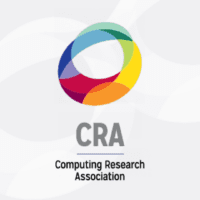The How and Why of Disability Data for the CRA Taulbee Survey
By Richard E. Ladner, Professor Emeritus, Paul G. Allen School of Computer Science and Engineering, University of Washington

Richard E. Ladner
For the first time in 2021, the CRA Taulbee Survey reported on disability status for students.[1] The survey chose to report on the number of students who received disability accommodations from the disability services office at their university. This number is typically much lower than the number of students who identify as having a disability. Nonetheless, for US institutions, it is an institutional number that is reported to the U.S. Department of Education and is important for budgeting purposes at each university. While the National Center for Education Statistics (NCES) reported that, in 2020-2021, 20.5 percent of undergraduate students identify as having a disability,[2] only about 8 percent of them are registered with their student disability services office according to the Postsecondary National Policy Institute.[3] Just concentrating on undergraduates over the past three CRA Taulbee Surveys, Table 1 shows the CRA Taulbee disability data so far.
Table 1: Summary of undergraduate data on disability over three years of the CRA Taulbee Survey.
| Year | Depts reporting to Taulbee | Depts responding to disability question | Percent Enrollment with Accommodations | Percent of Depts Reporting zero Student with Accommodations | Max Department percent with Accommodations |
| 2021 | 171 | 51 | 4.1% | 35% | 17% |
| 2022 | 182 | 56 | 4.1% | 38% | 34% |
| 2023 | 176 | 69 | 3.4% | 40% | 22% |
Although the number of departments responding to the disability question has grown slightly, the percentage of departments responding remains about one-third. Further, the percentage of those responding to the disability question who answer zero has reached 40 percent in 2023.
This article addresses two questions. First, how would a department get the disability data that is requested by the CRA Taulbee Survey? Second, why should a department care about this disability data? I address the questions in this order under the assumption that many CRA member departments want to report this data, but have not done so yet. The primary purpose of this article is to give some guidance to departments who want to report disability data.
How to Get Disability Data
The disability data that is relevant to the CRA Taulbee Survey is institutional data that is typically found in the university’s student database, namely, whether a student is registered for disability services in a particular year. Other socioeconomic student data requested by the CRA Taulbee Survey, such as whether a student has a Pell Grant or is identified as being a first generation college student, is also typically found in the university’s student database. The question for a department trying to answer the disability question is how does the department request all the standard CRA Taulbee Survey student data, including gender, race, ethnicity, and citizenship. A department should be able to get the student disability data in the same way. A new database query may need to be developed for disability and the other new socioeconomic student data. The student database is typically managed by the university’s office of institutional research (OIR). Each university will have its own protocol for interacting with the OIR to facilitate student database queries. Whatever protocol is being used to get student demographic data, the same one can be used for disability data.
There may be pushback from a university’s OIR with regard to disability data because of privacy and FERPA compliance concerns. If this pushback occurs at a U.S. university, it might be helpful to remind the OIR that it is required by Section 132 of the Higher Education Act of 1965 (P.L. 110-315),[4] as amended, to provide the very similar data to the National Center for Education Statistics (NCES) to be posted on the NCES College Navigator website.[5] Disability data that is anonymized should not fall under FERPA.
One bit of advice: do not ask your university’s office of student disability services for disability data. They may have the data, but it is not likely they will share it with a department. Hopefully, they will refer you to the university’s OIR.
Another piece of advice: do not expect university administrators to know that this kind of disability data is in the student database. I can recall several years ago talking to a high level administrator at the University of Washington who had no idea that this student disability data exists in the student database. The people who know the most about student data are those who work in the university’s OIR.
I looked up the percentage of undergraduate students enrolled who are formally registered with the office of disability services, for Fall 2022, on the College Navigator for U.S. universities that are CRA members, and put the percentages into a spreadsheet. There are 216 CRA member universities in the spreadsheet. If a university has multiple departments as CRA members, I only have one entry for the university. There were only three U.S. CRA member universities that did not have the disability data on the College Navigator. Summarizing what I found:
- 29 universities who reported “3 percent or less” and 187 reported a percentage greater than 3 percent.
- For the 187 universities with more than 3 percent, the percentages ranged from 3.38 percent to 32.00 percent with a median of 9.03 percent.
- For the 187 universities with more than 3 percent, the average, weighted by undergraduate enrollment for just those universities, is 9.26 percent.
- Assigning 0 percent to the 29 universities who reported “3 percent or less” the average, weighted by undergraduate enrollment for all 216 universities, is 7.75 percent.
It is safe to say that the actual percentage of undergraduates at all the CRA member universities is between 7.75 and 9.26 percent, which is relatively close to the 8 percent reported by the Postsecondary National Policy Institute. Nonetheless, it shows that the CRA members who report disability data to the CRA Taulbee Survey have far less participation by disabled students compared with the population at their universities. It suggests that the same is true for the combined CRA membership.
For those who are interested in finding their university’s disability data on the College Navigator, first find your university, then go to the “General Information” tab, then look at the right-hand column to find the data.[5] The College Navigator disability data only includes undergraduates, not Masters and PhD students. You might be interested in going to the Integrated Postsecondary Education Data System (IPEDS) to look for disability data. There is no variable related to disability that is available to the public on IPEDS.
I am concerned about the number of departments that are currently reporting zero undergraduates who receive disability accommodations to the CRA Taulbee Survey. I hope that each of these departments reach out to their OIR to make sure they are using the proper query or if they are trying to find this data elsewhere. It is highly unlikely that a department with more than 100 undergraduate majors has zero students who are registered with their student disability services office.
Why Get Disability Data
Broadening participation in computing (BPC) is a core value of the computing community. I wrote about this in my Viewpoints article in December 2009 in the Communications of the ACM.[6] The reasons for broadening participation in computing I outlined in that article still apply today:
- Numbers: There is still a high demand for computer professionals. The computing profession needs to attract people from all demographics.
- Social Justice: People from all demographics should have equal opportunity to become computer professionals.
- Quality: Diverse groups of designers and engineers tend to develop better computing products and services.
For these reasons and others, the NSF’s CISE Directorate, which is the major funding agency for computer and information science research in the U.S., has instituted programs and policies that promote BPC. Programs include the NSF BPC Alliances and the NSF CSGrad4US program, both of which fund CRA activities. Policies include the requirement that BPC Plans be included in medium to large proposals submitted to NSF CISE. CRA runs BPCnet.org, which provides many resources for proposal writers to CISE programs.
Along with other minoritized groups, disabled people are identified by NSF as a group that needs increased participation in STEM fields including computing fields.[7] Tracking the participation of members of these groups in undergraduate and graduate programs, and in computing professions, is important to understand if BPC activities are making an impact and for planning. Unfortunately, disability data is hard to collect and understand.[8] It took some time, but the CRA Taulbee Survey found a good demographic to track for disabled students, namely, the number of students registered with the disability services to receive accommodations at their universities. Let’s call this number DS for Disability Services. DS doesn’t tell the whole story about the participation of disabled students in computing degree programs, but it is a strong indicator of their participation for the following reasons:
- Comparing the university wide DS with the departmental DS will guide departments on whether they should be attracting more disabled students to their program.
- Tracking departmental DS over time will help a department understand if interventions they are using to attract disabled students are working.
- Sharing the departmental DS with the Taulbee survey will help the entire computing field understand how the field as a whole is doing with disability inclusion.
In this article, I covered the how and why of collecting disability data for the CRA Taulbee Survey. As an action item for readers of this article, please pass it on to the people in your department who submit data to the CRA Taulbee Survey. Readers may be interested in reading an older article I wrote in 2020 about disability data at all levels from K-12 to the workforce.[9]
Acknowledgement
This material is based upon work supported by the National Science Foundation under Grant No. 2137312. Thanks to Briana Blaser and Maya Cakmak for valuable input for this article.
[1] CRA Taulbee Survey. https://cra.org/resources/taulbee-survey/
[2] National Center for Education Statistics, Table 311.10. https://nces.ed.gov/programs/digest/d22/tables/dt22_311.10.asp
[3] Postsecondary National Policy Institute: Students with Disabilities in Higher Education. https://pnpi.org/wp-content/uploads/2023/11/StudentswithDisabilities-Nov-2023.pdf
[4] Higher Education Act of 1965 (P.L. 110-315). https://www.govinfo.gov/content/pkg/COMPS-765/pdf/COMPS-765.pdf
[5] NCES College Navigator. https://nces.ed.gov/collegenavigator/
[6] R.E. Ladner. 2009. Broadening Participation Opening Remarks. Commun. ACM 52, 12 (December 2009), 22–24. https://doi.org/10.1145/1610252.1610263.
[7] Broadening Participation in STEM homepage at NSF. https://new.nsf.gov/funding/initiatives/broadening-participation.
[8] B. Blaser and R.E. Ladner. Why is Data on Disability so Hard to Collect and Understand? 2020 Research on Equity and Sustained Participation in Engineering, Computing, and Technology (RESPECT), Portland, OR, USA, 2020, pp. 1-8, http://doi.org/10.1109/RESPECT49803.2020.9272466.
[9] Richard E. Ladner. 2020. Expanding the Pipeline: The Status of Persons with Disabilities in the Computer Science Pipeline. Computing Research News. November 2020, Vol. 32/No. 10. https://cra.org/crn/2020/11/expanding-the-pipeline-the-status-of-persons-with-disabilities-in-the-computer-science-pipeline/









